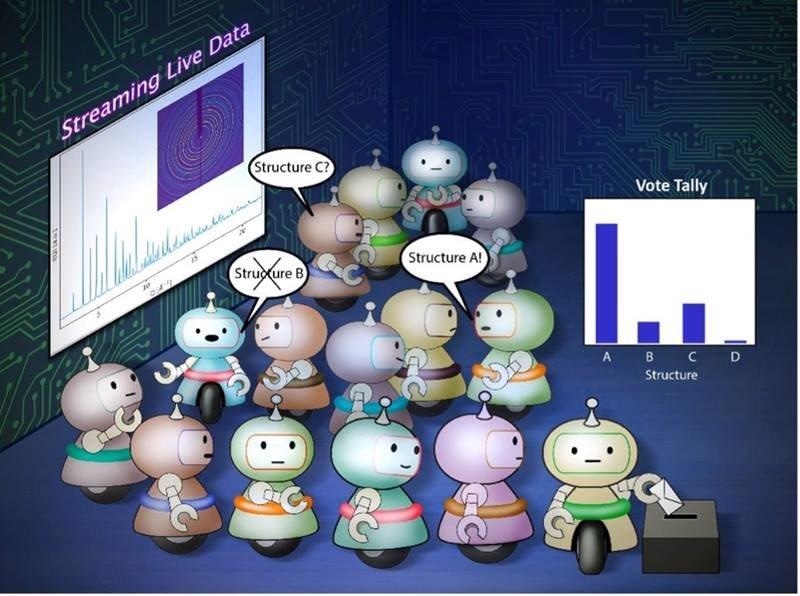A new artificial intelligence (AI)-powered approach for interpreting X-Ray diffraction (XRD) data has been created by researchers. The shifting of X-Rays is used in XRD to see inside the properties of molecules.
 An ensemble of AI agents observes streaming X-Ray data, argues amongst themselves, and votes to establish both classification and uncertainty in the prediction. This offers an educated guess about the atomic structure of the material being analyzed. Image Credit: Brookhaven National Laboratory.
An ensemble of AI agents observes streaming X-Ray data, argues amongst themselves, and votes to establish both classification and uncertainty in the prediction. This offers an educated guess about the atomic structure of the material being analyzed. Image Credit: Brookhaven National Laboratory.
The X-Ray Crystallography Companion Agent (XCA) is a new approach that brings together a group of AIs to question each other while evaluating live-streaming X-Ray data. The objective is to determine the atomic structure of the material being studied using X-Rays.
Each AI is allowed to “vote” based on its analysis. However, AIs can influence each other. The XCA technique uses the vote tally to evaluate what the most likely atomic structure is and to advise how confident the researchers should be in the AI analysis once the AIs have cast their final votes.
The Impact
With the ever-increasing rates of data collection, scientists’ ability to analyze such data frequently falls behind. This is especially true at world-class facilities such as the Department of Energy’s (DOE) X-Ray light source user facilities.
A group of scientists devised a new AI-powered autonomous data processing system that can keep up with today’s data-collecting speeds in this study. This new “ensemble voting” approach, unlike many existing AI approaches in this sector, delivers both forecasts and uncertainties.
As a result, the method becomes a digital specialist in XRD analysis. This method shows how AI and human researchers can collaborate to solve urgent scientific problems.
Summary
Scientists must first understand a material’s fundamental atomic constitution to produce new materials such as better batteries, more cost-effective catalysts or new medications. The atomic structure of materials is investigated using X-Ray diffraction (XRD).
Unfortunately, XRD analysis is time-consuming and complicated. The X-Ray Crystallography companion Agent, built by a collaboration of researchers from Brookhaven National Laboratory (BNL), the University of Liverpool, and Ruhr University Bochum, supports scientists by automatically identifying XRD patterns during observations.
XCA employs an ensemble of individual AIs that are trained quasi-independently of one another. Within its neural network, an AI’s mathematical brain, each agent has a slightly varied weighting. Each AI votes based on its interpretation and analysis of the data when data is presented to it.
Since various opinions lead to a common conclusion, ensemble consensus implies trust in the results. Strong disagreement, on the other hand, can indicate that the analysis was poorly stated, and the researchers should reconsider their assumptions.
According to the research, XCA can classify items as well as a human expert, but in fractions of a second. This breakthrough will hasten research in a variety of fields, including energy technologies, climate change and human health.
Journal Reference:
Maffettone, P.M., et al., (2021) Crystallography companion agent for high-throughput materials discovery. Nature Computational Science doi: 10.1038/s43588-021-00059-2.